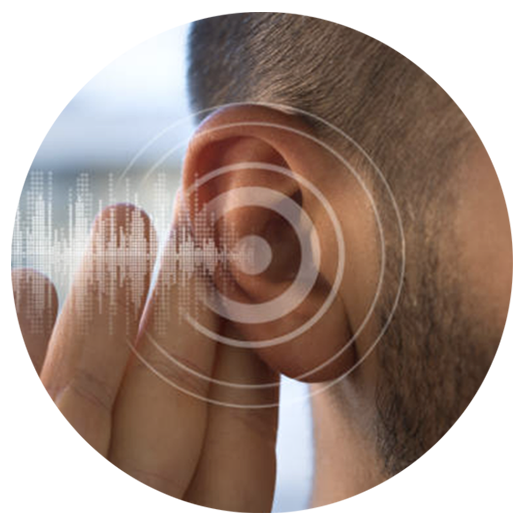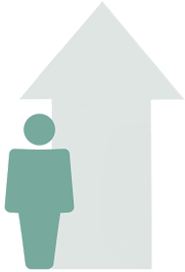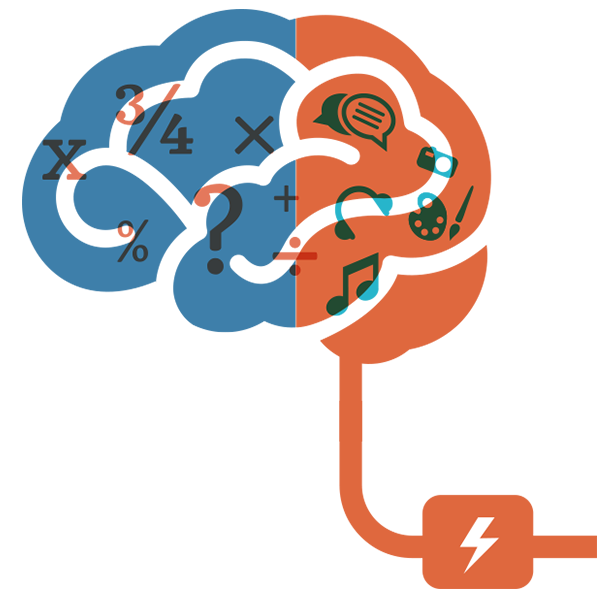Neuroplasticity is the brain's ability to change it's structure and function in response to stimuli.
Neurological rehabilitation can address various neurological disorders, conditions, and imbalances. Generally speaking, neuro rehab aims to reduce symptoms, increase function, and improve an individual's quality of life[1].
While several different modalities can be employed in the rehab process, the key to lasting and impactful change is targeting neurological integration at the bottom level, quite literally, our brain stem.
At brainvive, this is precisely what we do.
Our neuro rehab protocol connects and builds new neural pathways by leveraging your brain's innate neuroplasticity. By activating and integrating your auditory, vestibular, visual, and limbic systems, we address imbalances through optimizing neurological function.
People come to
brainvive seeking...
➞ Anxiety Relief
➞ Concussion Recovery
➞ Increased Cognitive Performance
➞ Support for Dyslexia & Other Learning Challenges
➞ Numerous Other Conditions
How do your auditory, vestibular, visual, and limbic systems connect? And what does this mean for neurological health? Read on for an in-depth look at the science behind our protocol.

What Are the Vestibular, Auditory, Visual, and Limbic Systems?
The auditory, vestibular, visual, and limbic systems are individual systems in your body that work in unique ways to inform your brain and nervous system about the environment around you and where you are in space. Together, they play a significant role in your emotional and physical well-being, allowing you to feel safe and centered in your body and in the world.
Let's look at each system in more detail and discuss what happens when they become imbalanced or dysfunctional.
Vestibular
Your vestibular system provides a sense of balance and orientation about where your body is in space. Your inner ear plays a central role in processing information for your vestibular system, sending signals to your brain about the movement and position of your head and body[2].
This system is key in regulating eye movements and posture and is crucial to overall balance and coordination. When the vestibular system is damaged or not functioning properly, it not only disrupts physical orientation but can also impact vision and hearing and even influence cognitive abilities[3].
According to the Brain Injury Institute of America, up to 50% of people with a history of traumatic brain injury experience vestibular impairments.
In fact, research shows that an imbalance in the vestibular system can lead to emotional dysregulation, such as anxiety, by impacting emotional processing[4][5].
Auditory
Your auditory system helps you perceive and understand the sounds you hear by transforming sound waves in your environment into vibrational messages within your inner ear. Traveling from your outer ear to your middle ear and finally to your inner ear, these vibrations eventually connect with your auditory nerve via the vibration of tiny hair cells in your inner ear. From here, information is sent to your brain, allowing you to perceive sound[6].
Interestingly, the same tiny hair cells that capture sound vibration also influence your vestibular system, giving us some insight into how your spatial and auditory awareness connect and influence one another[7].
Distortion or inconsistencies in the auditory system make it challenging to interpret auditory stimuli, leading to a range of imbalances.
Why?
Because your ears must work together in a coordinated fashion. Issues around coordination, comprehension, and connecting thoughts to words may arise when an imbalance in hearing occurs.
Simply put, disorganized auditory inputs can create confusion in the brain.
This is exemplified by what is known as the "right ear advantage."
Studies show that most people can perceive auditory stimuli (sound) more accurately from their right ears than their left[8]. The reason for this is due to the mapping of sound through your brain. As sound enters your right ear, it's directly routed to the left hemisphere of your brain, which is the area where language, speech, and some aspects of memory are processed. On the other hand, sound entering your left ear has to take a more complex route, first traveling through your right hemisphere and eventually making its way to the left.
This is why studies show that children listening to information in the right ear can remember what is being said much more efficiently than if the information comes in through the left[9].
Research also shows that right ear dominance takes a hit when someone is anxious or depressed. Individuals who have hyper-hearing in the right (or left) ear may be more prone to experience anxiety, depression, obsessive tendencies, etc. Even short-term stress is shown to impact ear dominance, with stress leading to changes in right ear dominance[10].
The good news is that research supports the role of auditory training in enhanced neuroplasticity. This means that given the proper auditory stimuli, your brain's connective pathways can improve[11][12].
Visual
Your visual system allows you to transform light in your environment into images in your visual field. While this is a system that we often take for granted, your visual awareness can have a profound impact on emotions, memory, comprehension, and balance (due to its connection with the vestibular system)[13][14][15][16].
Research shows that while vision loss can cause anxiety, it's also possible for stress and anxiety to eventually lead to challenges with vision[17][18]. Around 20% to 30% of patients undergoing neurological rehabilitation report defects in their visual field[19].
Other research shows that the status of your visual field can directly impact your quality of life[20].
Therefore, maintaining healthy eyesight and an expanded visual field is not only critical for everyday life, but it can have a significant impact on your emotional state and potentially influence your cognitive capacity. That is why one of the components of BrainVive’s Neuro-Rehab Protocol focuses on visual field expansion.
Limbic System
Your limbic system helps you process and regulate your emotions and memories and assists with motivation and learning[21]. It has a strong connection to your sense of smell, as your olfactory pathways lead directly to the limbic system, as opposed to your other senses, which are sent to your thalamus. This is why specific scents can ignite memories or instigate strong emotional reactions[22].
When there is dysfunction in your limbic system, you can experience problems with memory, emotional disturbances (anxiety, depression, anger), or something called aphasia, which interferes with your ability to speak or understand language[23].
Your limbic system is also intimately tied to your fight-or-flight response due to the role of your amygdala in sympathetic activation. Your amygdala, which is a part of your limbic system, is sensitive to triggers of danger in your environment. When your brain senses that danger may be near, your amygdala jumps into action, releasing stress hormones that instigate your fight-or-flight response[24]. This is why an overactive or out-of-balance limbic system may lead to states of anxiety and overwhelm[25]. As previously stated, anxiety can impact the function of your auditory system, visual system, and vestibular system.
How These Systems Impact
Neurological Status
Your vestibular, auditory, visual, and limbic systems are all part of and related to your nervous system. This means that each of these systems not only impacts your nervous system, but dysregulation in your nervous system can also impact each of these systems.
When a person presents with symptoms like anxiety, learning challenges, behavioral issues, or memory issues, it's a cardinal sign that at least one of these systems is off-balance, and therefore their perception is clouded.
Even acute complications, such as a concussion, can create a disturbance in one of these systems, leading to symptoms like difficulty concentrating, dizziness, blurry vision, or ringing in the ears[26].
The good news, however, is that we have the ability to leverage our vestibular, auditory, visual, and limbic systems to create more balance in our nervous system and assist neurological function.
By creating new, organized connections in the brain regions related to these systems, we can directly impact the state of our nervous system.
Did you notice that when each of the systems mentioned above was out of balance, anxiety was one of the primary outcomes? This is due to the effect of the fight or flight (stress response) on your nervous system.
On one hand, anxiety often occurs in people with sensory processing challenges due to their inability to acclimate to their environment. On the flip side, when someone is anxious, they may become more prone to sensory sensitivity or processing issues as their nervous system is already overloaded.
The Power of Sensory Integration
Did you notice that when each of the systems mentioned above was out of balance, anxiety was one of the primary outcomes? This is due to the effect of the fight or flight (stress response) on your nervous system.
Greater integration paves the way for reduced anxiety, increased learning and development, better coordination, enhanced emotional regulation, and so much more.
brainvive's Unique
Integration Program
brainvive's approach to jumpstarting integration and development in the nervous system and neurological functioning centers around the four systems we've been discussing: auditory, visual, vestibular, and limbic.
Instead of focusing on one system individually, we target all four systems simultaneously for optimal integration and neuroplasticity.
This multi-integration approach is responsible for the incredible results seen in our clients across a myriad of neurological functions.
How exactly do we address and integrate each system?
Let's explore each in detail.
The Vestibular System
Research shows that enhanced levels of stress and anxiety, stemming from the fight or flight response, are often accompanied by vestibular dysfunction. Balancing the vestibular system is a powerful way to help calm the nervous system and reduce stress[28].
It’s also highly effective in people that have experienced concussions, as the vestibular system often takes a hit with these injuries as evidenced by symptoms such as dizziness, vertigo, and nausea[29][30]. Research shows that engaging in vestibular training as an early intervention post-concussion can result in a reduction in concussive symptoms and can help to speed up recovery[31].
Furthermore, vestibular training has been shown to be an effective strategy for children with ADHD.
Research shows that there is a strong correlation between ADHD and vestibular dysfunction[32]. When children with ADHD receive vestibular training, they show great improvements in cognitive performance[33].
Studies also show a strong correlation between vestibular dysfunction and poor school performance.
One study found that 67% of the students struggling with learning issues at school showed vestibular alterations[34].
This likely is due, in part, to the vestibular systems impact on our ability to pay attention. When attention and focus are a challenge, all forms of learning become much more difficult[27]
The good news is that vestibular stimulation can help to enhance attention and focus, and therefore improve learning capacity[34].
Along the same lines, research shows that vestibular therapy can improve reading fluency in children with dyslexia[35].
As a part of our protocol, we activate the vestibular system for 12 hours (one hour per day). This vestibular input involves crossing the midline of the body, which refers to moving the body across an imaginary line that runs down from your head to your toes.
Crossing the midline is vital for development of your functional motor skills. Without proper motor skill development individuals may display awkward or imbalanced movements. For children, this could look like requiring additional assistance for handwriting, using scissors, coordination when running or jumping, etc.
The brainvive Neuro-Rehab Protocol vestibular component involves laying on a rotating Trochoidal Motion Table. This facilitates the vestibular input needed for our multi-sensory training.
Greater integration paves the way for reduced anxiety, increased learning and development, better coordination, enhanced emotional regulation, and so much more.
brainvive's Unique Integration Program
brainvive's approach to jumpstarting integration and development in the nervous system and neurological functioning centers around the four systems we've been discussing: auditory, visual, vestibular, and limbic.
Instead of focusing on one system individually, we target all four systems simultaneously for optimal integration and neuroplasticity.
This multi-integration approach is responsible for the incredible results seen in our clients across a myriad of neurological functions.
How exactly do we address and integrate each system?
Let's explore each in detail.
After finishing our protocol:

66%
of individuals self-report (or parent report) improvement in anxiety

74%
of individuals self-report (or parent report) improvement in coordination
The Lymbic System
As the home of your amygdala, your limbic system plays a critical role in regulating your fight or flight response. The limbic system is the brain's network responsible for controlling emotions and formulating memories. Studies show that both anxiety and depression may result from dysregulation in this system[43].
Research has shown that aromatherapy can be very powerful for shifting the nervous system out of fight or flight and into a rest and digest (relaxed) state[44][45].
brainvive's
Neuro-Rehab Protocol activates the limbic system using aromatherapy. As mentioned, your olfactory system (sense of smell) is directly tied to your limbic system, which is why certain scents can arouse such strong emotions and promote anxiety relief within us. We use this connection to our advantage by choosing scents that balance the limbic system and bring about a sense of emotional calm.
The brainvive Difference
Engaging in neurological rehabilitation can offer a range of benefits, but not all programs are created equal.
At brainvive, we don’t simply aim to address your presenting issue, we target change at the brainstem level to shift perception and promote integration.
Our protocol is designed to address a number of goals and needs. From the high performers looking for an extra edge to children presenting with learning challenges or anxiety, the brainvive program is an all-encompassing and research-driven way to improve your life.
As you have read, regulating the vestibular, auditory, visual and limbic systems is critical to healthy development and learning, ability to manage stress, performance, coordination, and more. While we can see improvements in these systems through independent input, the use of multisensory input has been proven to create a greater amount of activity in the brain[46].
This is the brainvive difference.
We take these 4 operating systems and integrate the input an individual is receiving to activate the creation of new neural pathways – integration is key!
References
1. Neurological rehabilitation. Cedars-Sinai. Accessed February 2, 2024. http://www.cedars-sinai.org/health-library/diseases-and-conditions/n/neurological-rehabilitation.html
2. Purves D, Augustine GJ, Fitzpatrick D, et al. The Vestibular System. In: Neuroscience. 2nd Edition. Sinauer Associates; 2001.
3. Casale J, Browne T, Murray IV, Gupta G. Physiology, Vestibular System. StatPearls Publishing; 2023.
4. Bednarczuk NF, Casanovas Ortega M, Fluri AS, Arshad Q. Vestibulo‐cortical hemispheric dominance: The link between anxiety and the vestibular system? Eur J Neurosci. 2018;47(12):1517-1524. doi:10.1111/ejn.13948
5. Bayat A, Hoseinabadi R, Saki N, Sanayi R. Disability and anxiety in vestibular diseases: A cross-sectional study. Cureus. 2020;12(11). doi:10.7759/cureus.11813
6. Peterson DC, Reddy V, Launico MV, Hamel RN. Neuroanatomy, Auditory Pathway. Published online 2023. 7. Auditory and Vestibular Systems. In: The Human Nervous System. Humana Press; 2005:285-303.
8. Tanaka K, Ross B, Kuriki S, Harashima T, Obuchi C, Okamoto H. Neurophysiological evaluation of right-ear advantage during dichotic listening. Front Psychol. 2021;12. doi:10.3389/fpsyg.2021.696263
9. Acoustical Society of America. Want to listen better? Lend a right ear. Science Daily. Published online December 6, 2017. Accessed February 2, 2024. https://www.sciencedaily.com/releases/2017/12/171206090611.htm
10. Estalayo-Gutiérrez B, Álvarez-Pasquín MJ, Germain F. Modulation of auditory perception laterality under anxiety and depression conditions. Symmetry (Basel). 2021;14(1):24. doi:10.3390/sym14010024
11. Kawata NYS, Nouchi R, Oba K, Matsuzaki Y, Kawashima R. Auditory cognitive training improves brain plasticity in healthy older adults: Evidence from a randomized controlled trial. Front Aging Neurosci. 2022;14. doi:10.3389/fnagi.2022.826672
12. Donadon C, Hatzopoulos S, Henry Skarzynski P, Dominici Sanfins M. Neuroplasticity and the auditory system. In: Hatzopoulos S, Ciorba A, Skarzynski PH, eds. The Human Auditory System - Basic Features and Updates on Audiological Diagnosis and Therapy. IntechOpen; 2020.
13. Kragel PA, Reddan MC, LaBar KS, Wager TD. Emotion schemas are embedded in the human visual system. Sci Adv. 2019;5(7). doi:10.1126/sciadv.aaw4358
14. Botch TL, Robertson CE, Finn ES. A deeper look at vision and memory. Nat Neurosci. 2022;25(1):8-10. doi:10.1038/s41593-021-00966-7
15. Assländer L, Hettich G, Mergner T. Visual contribution to human standing balance during support surface tilts. Hum Mov Sci. 2015;41:147-164. doi:10.1016/j.humov.2015.02.010
16. Solan HA, Shelley-Tremblay JF, Hansen PC, Larson S. Is there a common linkage among reading comprehension, visual attention, and magnocellular processing? J Learn Disabil. 2007;40(3):270-278. doi:10.1177/00222194070400030701
References
17. Sabel BA, Wang J, Cárdenas-Morales L, Faiq M, Heim C. Mental stress as consequence and cause of vision loss: the dawn of psychosomatic ophthalmology for preventive and personalized medicine. EPMA J. 2018;9(2):133-160. doi:10.1007/s13167-018-0136-8
18. Ortiz-Peregrina S, Ortiz C, Casares-López M, Martino F, Granados-Delgado P, Anera RG. The relationship between anxiety, visual function, and symptomatology in university students. J Clin Med. 2023;12(20):6595. doi:10.3390/jcm12206595
19. Matteo BM, Viganò B, Cerri CG, Perin C. Visual field restorative rehabilitation after brain injury. J Vis. 2016;16(9):11. doi:10.1167/16.9.11
20. Patino CM, Varma R, Azen SP, Conti DV, Nichol MB, McKean-Cowdin R. The impact of change in visual field on health-related quality of life. Ophthalmology. 2011;118(7):1310-1317. doi:10.1016/j.ophtha.2010.12.018
21. Torrico TJ, Abdijadid S. Neuroanatomy, Limbic System. StatPearls Publishing; 2023.
22. Sullivan RM, Wilson DA, Ravel N, Mouly AM. Olfactory memory networks: from emotional learning to social behaviors. Front Behav Neurosci. 2015;9. doi:10.3389/fnbeh.2015.00036
23. Bari A, Niu T, Langevin JP, Fried I. Limbic neuromodulation. Neurosurg Clin N Am. 2014;25(1):137-145. doi:10.1016/j.nec.2013.08.004
24. Amygdala. Cleveland Clinic. Accessed February 2, 2024. https://my.clevelandclinic.org/health/body/24894-amygdala
25. Martin EI, Ressler KJ, Binder E, Nemeroff CB. The neurobiology of anxiety disorders: Brain imaging, genetics, and psychoneuroendocrinology. Psychiatr Clin North Am. 2009;32(3):549-575. doi:10.1016/j.psc.2009.05.004
26. Concussion. Mayo Clinic. Published January 12, 2024. Accessed February 2, 2024. https://www.mayoclinic.org/diseases-conditions/concussion/symptoms-causes/syc-20355594
27. Wiener-Vacher SR, Hamilton DA, Wiener SI. Vestibular activity and cognitive development in children: perspectives. Front Integr Neurosci. 2013;7. doi:10.3389/fnint.2013.00092
28. Kumar SS. Vestibular Stimulation for Stress Management in Students. J Clin Diagn Res. 2016;10(2):CC27. doi:10.7860/jcdr/2016/17607.7299
29. Valovich McLeod TC, Hale TD. Vestibular and balance issues following sport-related concussion. Brain Inj. 2015;29(2):175-184. doi:10.3109/02699052.2014.965206
30. Mucha A, Fedor S, DeMarco D. Vestibular dysfunction and concussion. In: Sports Neurology. Vol 158. Elsevier; 2018:135-144.
31. Babula G, Warunek E, Cure K, Nikolski G, Fritz H, Barker S. Vestibular rehabilitation as an early intervention in athletes who are post-concussion: A systematic review. Int J Sports Phys Ther. 2023;18(3):577. doi:10.26603/001c.75369
32. Caldani S, Baghdadi M, Moscoso A, et al. Vestibular functioning in children with neurodevelopmental disorders using the functional head impulse test. Brain Sci. 2020;10(11):887. doi:10.3390/brainsci10110887
References
33. Lotfi Y, Rezazadeh N, Moossavi A, et al. Preliminary evidence of improved cognitive performance following vestibular rehabilitation in children with combined ADHD (cADHD) and concurrent vestibular impairment. Auris Nasus Larynx. 2017;44(6):700-707. doi:10.1016/j.anl.2017.01.011
34. Franco ES, Panhoca I. Vestibular function in children underperforming at school. Braz J Otorhinolaryngol. 2008;74(6):815-825. doi:10.1016/s1808-8694(15)30141-5
35. Caldani S, Moiroud L, Miquel C, Peiffer V, Florian A, Bucci MP. Short vestibular and cognitive training improves oral reading fluency in children with dyslexia. Brain Sci. 2021;11(11):1440. doi:10.3390/brainsci11111440
36. Kaplan R. Changes in form visual fields in reading disabled children produced by syntonic (colored light) stimulation. International Journal of Biosocial Research. 1983;5(1):20-33. https://psycnet.apa.org/fulltext/1984-29231-001.pdf
37. Liberman JI. The effect of syntonic (colored light) stimulation on certain visual and cognitive functions. International Journal of Biosocial Research. 1986;8(2):169-184. https://psycnet.apa.org/fulltext/1988-12145-001.pdf
38. Vision and concussion: Symptoms, signs, evaluation, and treatment. American Academy of Ophthalmology. Published August 23, 2022. Accessed February 2, 2024. https://www.aao.org/education/clinical-statement/vision-concussion-symptoms-signs-evaluation-treatm
39. Chokron S, Kovarski K, Dutton GN. Cortical visual impairments and learning disabilities. Front Hum Neurosci. 2021;15. doi:10.3389/fnhum.2021.713316
40. Cunha P, Silva IM de C, Neiva ER, Tristão RM. Auditory processing disorder evaluations and cognitive profiles of children with specific learning disorder. Clin Neurophysiol Pract. 2019;4:119-127. doi:10.1016/j.cnp.2019.05.001
41. Edelson SM, Arin D, Bauman M, et al. Auditory Integration Training: A double-blind study of behavioral and electrophysiological effects in people with autism. Focus Autism Other Dev Disabl. 1999;14(2):73-81. doi:10.1177/108835769901400202
42. Pinheiro FH, Capellini SA. Auditory training in students with learning disabilities. Pro Fono. 2010;22(1):49-54. doi:10.1590/s0104-56872010000100010
43. Pandya M, Altinay M, Malone DA Jr, Anand A. Where in the brain is depression? Curr Psychiatry Rep. 2012;14(6):634-642. doi:10.1007/s11920-012-0322-7
44. Kim C, Lee G, Song C. The effect of short-term inhalation of fir essential oil on autonomic nervous activity in middle-aged women. Explore (NY). 2023;19(6):820-826. doi:10.1016/j.explore.2023.04.006
45. Lin PH, Lin YP, Chen KL, Yang SY, Shih YH, Wang PY. Effect of aromatherapy on autonomic nervous system regulation with treadmill exercise-induced stress among adolescents. PLoS One. 2021;16(4):e0249795. doi:10.1371/journal.pone.0249795
46. Willis J. Brain-Friendly Strategies for the Inclusion Classroom: Insights from a Neurologist and Classroom Teacher. Association for Supervision & Curriculum Development; 2007.


